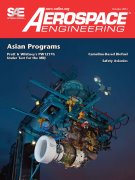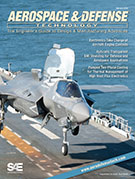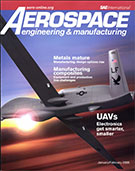Magazine

AEROSPACE ENGINEERING 2013-10
2013-10-01
High hopes or just dreaming? A look at how Asia's aircraft manufacturers are trying to break into new markets to challenge the status quo. Camelina-based biofuel shows advantages in turboprop Researchers within the government of Canada see the need to improve the emissions performance of the Rolls-Royce T56 engine, which despite its age remains a workhorse for its military aircraft fleet.



















